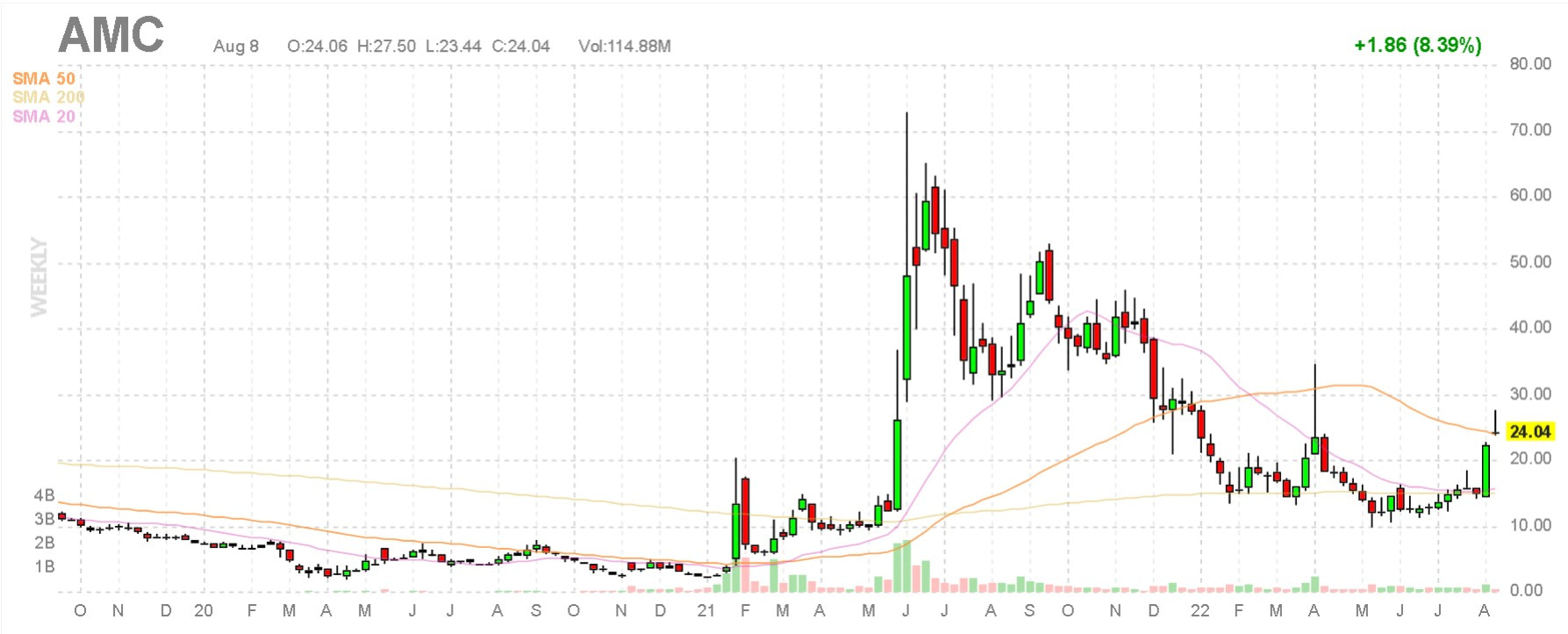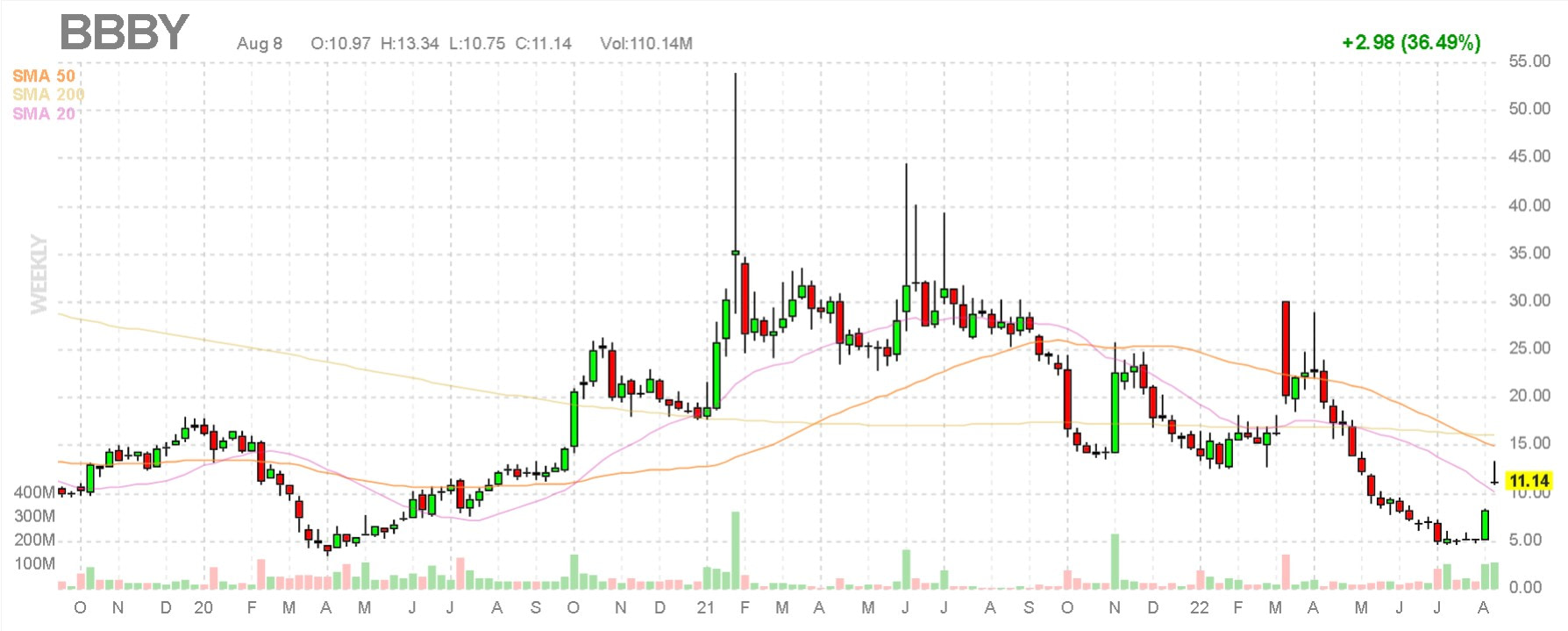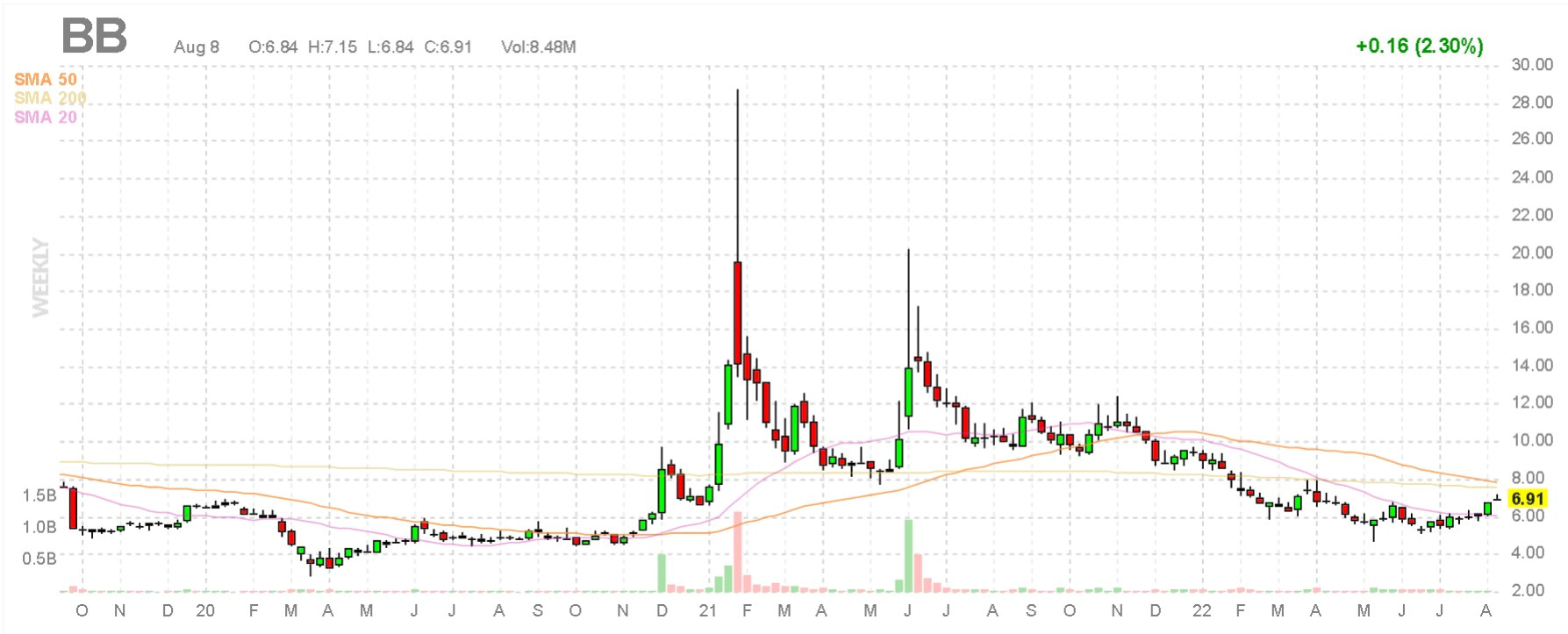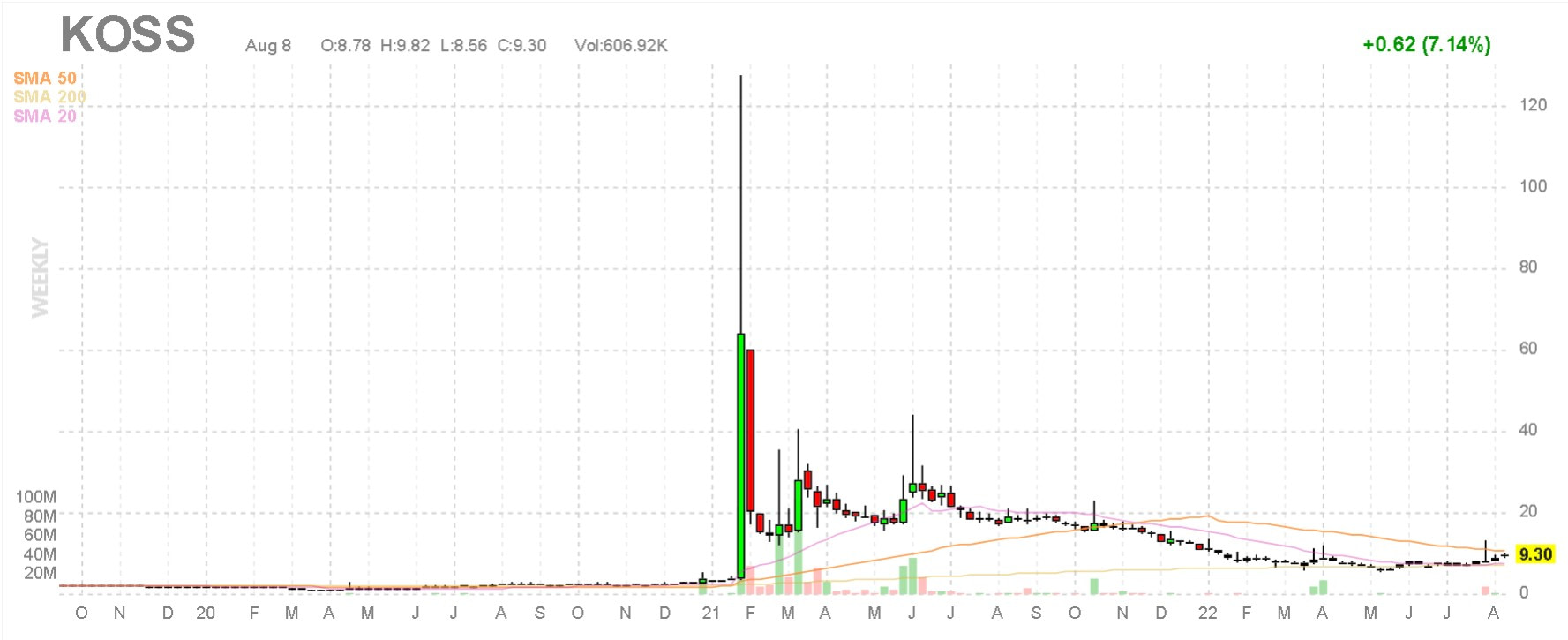Andy Warhol once supposedly said that in the future, everyone will be famous for 15 minutes. The “apes” of Reddit’s r/wallstreetbets forum had theirs in early 2021, pushing a basket of previously ignored and widely shorted stocks “to the moon” and squeezing short-selling hedge funds. But what happened to meme stocks? Were they a flash in the pan, or does the momentum live on?
A year after the Reddit warriors started the meme-stock phenomenon, however, it’s appropriate to look back and conduct a postmortem on some of the more notable names, as well as the meme-stock phenomenon generally. How did these stocks fare over time, and are the short-squeezers still active?
What Makes a Meme Stock?
In order to approach an answer to these questions, it’s important to first understand what attracts certain stocks to the meme-stock crowd in the first place. There are no hard-and-fast guidelines as the Reddit traders undoubtedly want to retain an element of surprise, but certain characteristics do seem to make stocks more meme-worthy than others.
First of all, it’s much easier for a small crowd of social-media traders to move the price of a stock with a low price (as in, less than $20 per share) and low daily trading volume (such as fewer than 1 million shares traded on a typical day). So, don’t expect Apple or Netflix to be the target of a Reddit-fueled short squeeze anytime soon.
The Short Factor
It also helps if the stock has a high short interest ratio, which is the percentage of a stock’s available-for-trading shares that are held in short positions. When this ratio exceeds 20%, and especially when it tops 30%, then there’s a whole lot of shorting going on with that stock. If a short squeeze happens, the share price could zoom higher as short sellers scramble to cover their positions.
Most of the meme stocks that launched the movement in 2021 were clear candidates for short selling. Their revenues were flat or declining and there were few prospects for recovery. This attracted high levels of short interest. It also attracted support from investors who saw the short interest as an assault by hedge funds on companies that they knew well and remembered fondly.
The Meme Stocks
Some examples of stocks that met at least some of these criteria during the height of meme-stock mania included GameStop (GME), AMC Entertainment (AMC), Bed Bath & Beyond (BBBY), BlackBerry (BB), and Koss (KOSS). There’s another common thread that seems to run through these former meme stocks, though, and it’s not as easily quantifiable as trading volume or short interest ratio.
In the wake of COVID-19’s onset, underdog companies like AMC, GameStop, and BlackBerry may have had sentimental appeal to meme-stock traders; their success meant that just maybe, businesses across America could survive the pandemic crisis. Besides, it must have been deeply gratifying to beat short-selling hedge funds at their own game by rescuing these formerly underappreciated stocks from orchestrated bear raids.
Meme Stocks: After the 15 Minutes
Fame can be everlasting, or it can be painfully fleeting. So, did last year’s newly minted meme superstars stay in traders’ favor, or were they mere flashes in the proverbial pan to be given the “Reddit and forget it” treatment? We’ll start with the one that started it all, GameStop (charts are courtesy of Finviz):

GME stock provides a textbook example of the precipitous rise and fall of a former $5 stock to dizzying heights – above $120 for a brief moment – followed by a partial retracement. Many meme stocks have followed this trajectory as it’s difficult to maintain a short squeeze when a stock’s price increases and its short interest ratio diminishes.

AMC stock tells a similar tale, though unlike GME, AMC hasn’t quite settled into a range yet. However, a recent price surge suggests that the beast may awaken once again.

BBBY stock provides an interesting case as there may be a new short squeeze in progress. Of course, the financial media’s involvement can precipitate the price move; a case in point would be a recent headline declaring, “Bed Bath & Beyond shares soar 45% as WallStreetBets crowd chase the former meme stock.”

Of the examples we’ve examined so far, it appears that BlackBerry (BB) stock has suffered the worst post-squeeze decline. There’s always hope for a comeback as long as the company is publicly listed, but BB stock’s full retracement to pre-meme levels is surely disheartening.

Headphone maker Koss (KOSS) was thrust into the spotlight with a share-price move even more dramatic than GameStop’s. However, a brutal retracement has made the prospects of a full recovery seem less likely with each passing month.
From these examples, we can discern a pop-and-drop trajectory and, in some cases, signs of life that hint at the possibility of another squeeze. It’s difficult to provide much in the way of meaningful prediction or even analysis with these stocks, though, as traditional technical and fundamental metrics don’t necessarily apply here and the only evident motif is sky-high volatility.
Have Meme Stocks Evolved?
So, where does this leave the meme-stock movement in 2022 and beyond? Is it even a movement anymore, for that matter?
Without penetrating into the secretive world of Reddit short-squeeze traders, it’s difficult to survey the landscape of today’s meme-stock movement. AMC and especially BBBY above tend to indicate that the meme dreams are still alive, but the short-squeeze crowd doesn’t necessarily have the market-moving force it once did.
This is partly because they are fighting against two powerful forces.
The Desire for Profit
Most investors seek profit, and that can make a short squeeze difficult to maintain.
Short sellers work by borrowing shares. When the contract expires they have to buy shares to pay back and fulfill the contract. If the shares become cheaper, they earn a profit.
A short squeeze works by buying up shares and forcing the short sellers to buy back at a higher price. This only works if the people doing the squeezing refuse to sell their shares, hence the mantra “HODL”, for “hold on for dear life”.
As the price rises, the people holding have a greater and greater incentive to sell. They also have an incentive to encourage others to hold, because the last ones “HODLing” are going to lose money. It’s hard to prove, but it’s likely that some of those shouting “HODL” the loudest are selling into the surge.
The key to profiting from a short squeeze is getting out in time. Some investors who are in it to hurt the hedge funds rather than to make a profit may hold on, but eventually, people will take profit and sell, breaking the squeeze.
It’s likely that some of those shouting “HODL” the loudest are selling into the surge.
Reversion to the Mean
The phrase “reversion to the mean” describes the tendency of an investment to return to a fair valuation based on its fundamentals. An investment may become overvalued or undervalued for some time, but it’s unlikely to stay that way.
One of the less discussed aspects of meme stocks is that most of them weren’t being shorted just because of malicious hedge funds. These were deeply troubled companies with poor financials and few prospects for future improvement.
Investors didn’t buy these stocks because they believed that their fundamentals justified the price, or because their growth rates were attractive. They bought purely as part of a short squeeze, to pressure the short-selling hedge funds, or to profit from the squeeze. Reversion to the mean may be delayed, but eventually, these companies will return to a value justified by their fundamentals.
Where Are Meme Stocks Now?
As we saw above, meme stocks have taken different trajectories since their moment of prominence. Some, like BB and KOSS, have largely reverted to the mean, plummeting from their short-squeeze highs.
The most visible meme stocks, GME and AMC, have retreated dramatically from their peaks but are holding at levels well above their pre-squeeze price. Both are arguably highly overvalued and could fall more.
Others, like BBBY, are showing signs of moving into a new short squeeze phase, and could – though it’s by no means certain – spike again.
Thus, it may be necessary to reframe the meme-stock movement, not so much as a hedge-fund-battling antihero, but rather as an ongoing phenomenon with less flash but more stability. We can compare it to a movie actor who was famous briefly and still pops up from time to time in cameo film appearances.
It wouldn’t be accurate, then, to say that meme stocks were last year’s news. Sometimes a new meme stock might emerge, such as electric vehicle manufacturer Faraday Future (FEFE), which has attracted some buzz lately.
A better idea than trying to chase down the next meme stock, though, would be to learn from others’ mistakes. Trying to time the movement of a potential short-squeeze candidate is extremely difficult. Moreover, buying a meme stock after it has already gained hundreds of percentage points in value can be bad for one’s financial health.
Most of all, declaring the death of the meme-stock phenomenon would certainly be premature. Short-selling stocks known to be Reddit favorites is a dangerous proposition – after all, practically any stock can get another 15 minutes of fame!
The post What Happened to Meme Stocks? appeared first on FinMasters.
FinMasters